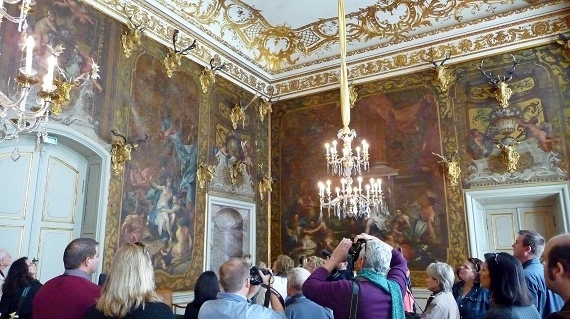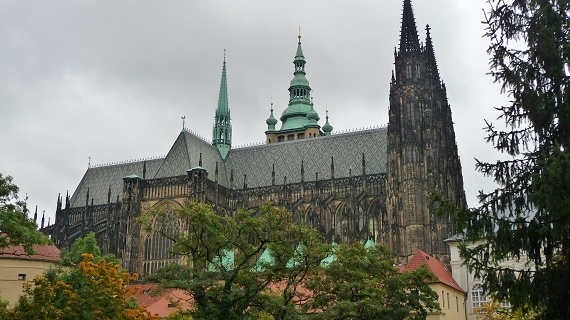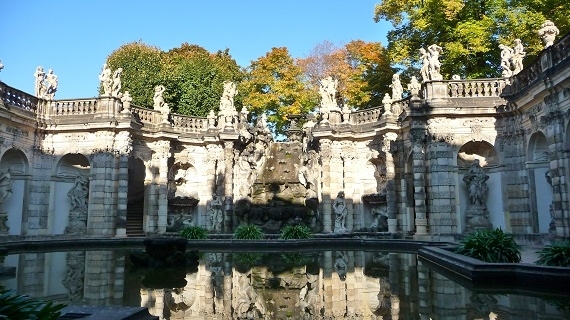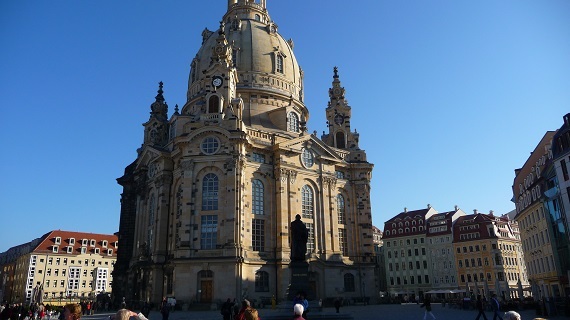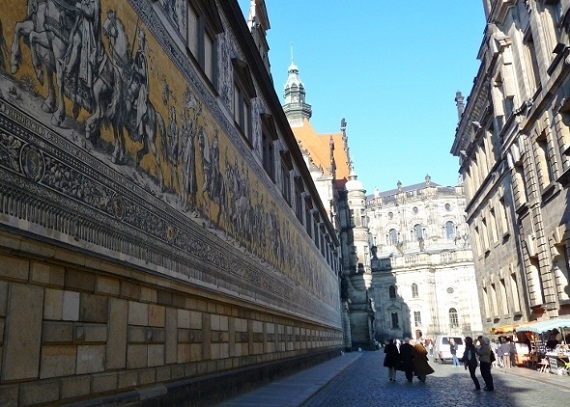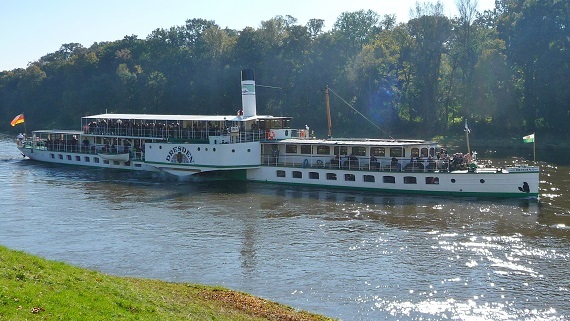Dinner at Augustus the Strong's hunting castle must have been a real hoot. Imagine a hundred or so noble guests chowing down in the dining hall after a long day of reducing the local populations of deer, boars, ducks, herons, partridges, geese and the like. You can almost hear the guests chuckling at Augustus' jokes while watching for court jesters to come hurtling their way (the fun-loving 18th century monarch loved to toss them around, historians say) and ducking flying foxes (it's said he could lob the droopy-eared animals around with just one finger).
Indeed, it was good to be Augustus the Strong. For one thing, he had lots of jobs, among them King of Poland, Grand Duke of Lithuania and Elector of the State of Saxony (which meant, besides running that central European state, he could vote for the emperor of the Holy Roman Empire). And yes, he had bear-like strength. For instance, he could break horseshoes with his bare hands.
Augustus' court was in the city of Dresden, his home town and the capital of Saxony for the last thousand or so years. Saxony has been a German state, off and on, since 1815.
On a tour of the city, you learn two things right off the bat. First, Augustus was a
big spender. You can't miss his ornate, baroque palaces and government buildings... they're all over the place, such as the spectacular Zwinger Palace complex of gardens, courtyards, pavilions and galleries. Second, he was a ladies man. Stories say he had more mistresses than he could remember over the years, and that they bore him hundreds of children.
Augustus' sprawling palaces were rebuilt along with most of Dresden after the city was virtually wiped out by Allied bombers during World War II. Major reconstruction projects included the landmark Protestant church Die Frauenkirche (Church of Our Lady), which was built in the 1700s and reduced to rubble in the bombing. It was rebuilt stone by stone over 11 years at a cost of $215 million, mostly financed by donations from around the world.
After the end of the war, the city was occupied by the Russians until they were booted out in the "Peaceful Revolution" of 1989. Tour guide Sylvia Hano says there's an easy way to spot buildings around town that were constructed by the Russians: "If it's ugly, they built it."
Another local landmark on the tour is a 335-foot-long tile mural called "The Procession of the Princes" (portraying all the rulers of Saxony from the 12th to the 19th centuries and said to be the longest tile mural in the world). From there, the tour crosses the Elbe River to visit some of Augustus' hideaways out in the lush meadows of the Elbe Valley.
Schloss Moritzburg, Augustus' hunting castle, is located on a nearby island right off the travel posters. You half expect to see Cinderella sprinkling moonbeams from a magic wand as she flitters around the castle's red-roofed towers. No wonder it's known as "the Fairy Tale Castle."
Good times were also on tap down the road at another must-see castle called Pillnitz. This one is known as Augustus' pleasure castle, in part because it's surrounded by spectacular gardens where the merry monarch used to wander around with his ladies.
The castle once belonged to the mistress of Augustus' brother. When he died, she was kicked out by Augustus, and the place became home to his long-time mistress Anna Constanta von Brockdorff, aka the Countess of Cosel.
Guide Hano tells how Augustus eventually tired of the countess - perhaps because she began dabbling in politics - and banished her to a sort of boarding house for ex-mistresses in Dresden's low-rent district.
Augustus died of a gangrene infection in 1733 at the ripe old age of 63. Besides lots of children, he left a legacy of eye-popping baroque palaces, fine art collections and musical triumphs that made Dresden one of the top cultural centers of Europe. History books salute him for spearheading programs that unveiled the Asian secrets of manufacturing fine porcelain, and for making the term "Dresden china" synonymous with a world-famous product.
More info: Visit the German National Tourist Office.
Photos by Bob Schulman.
